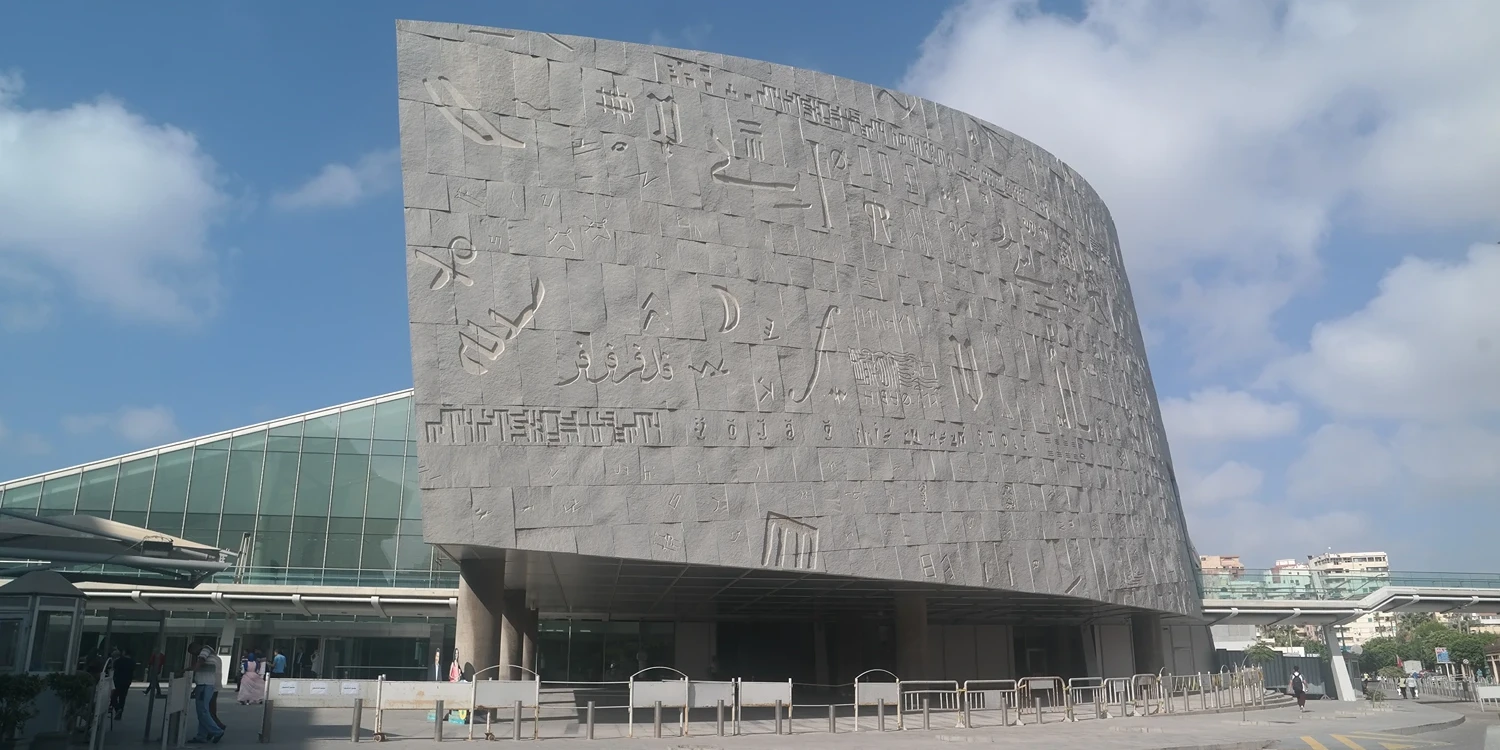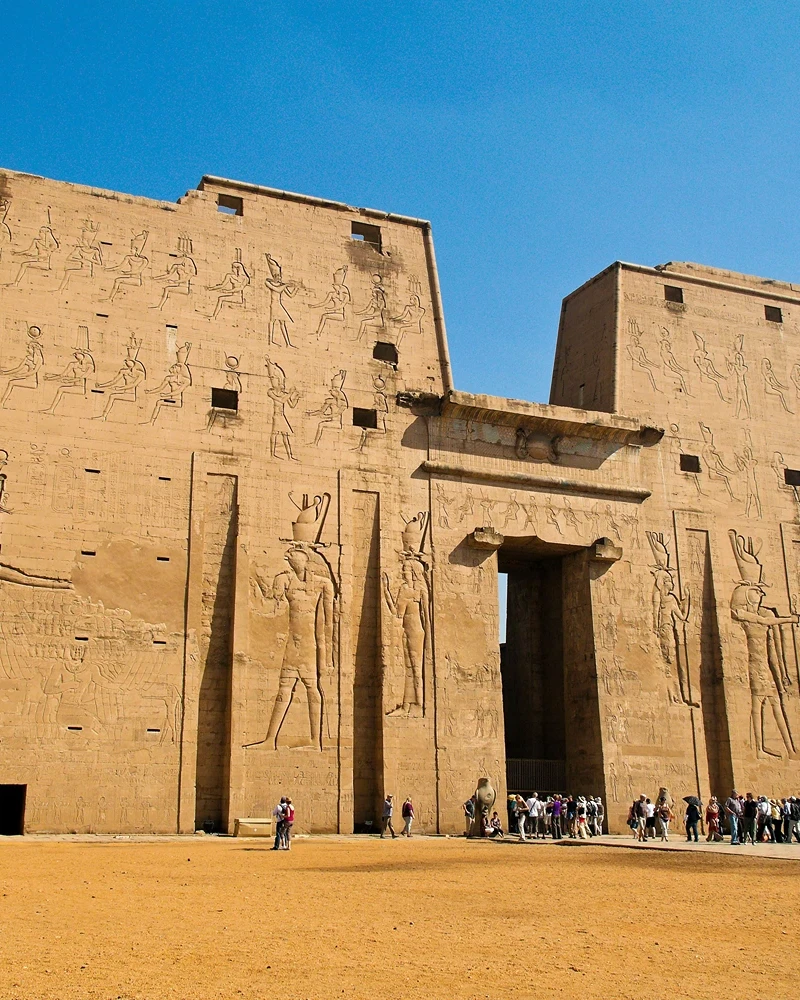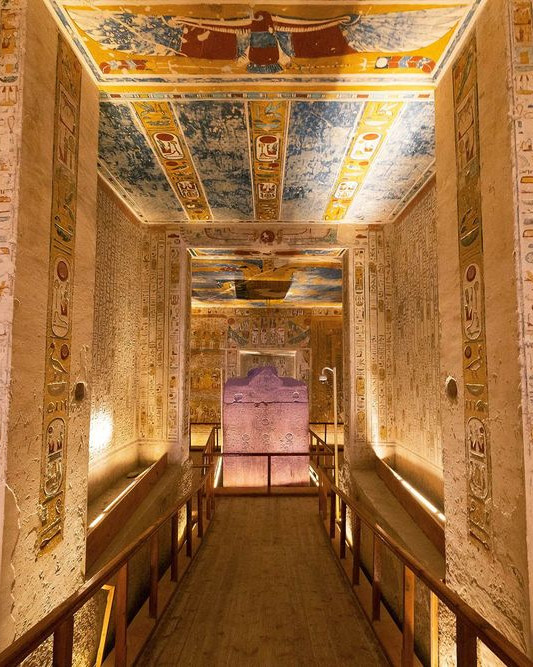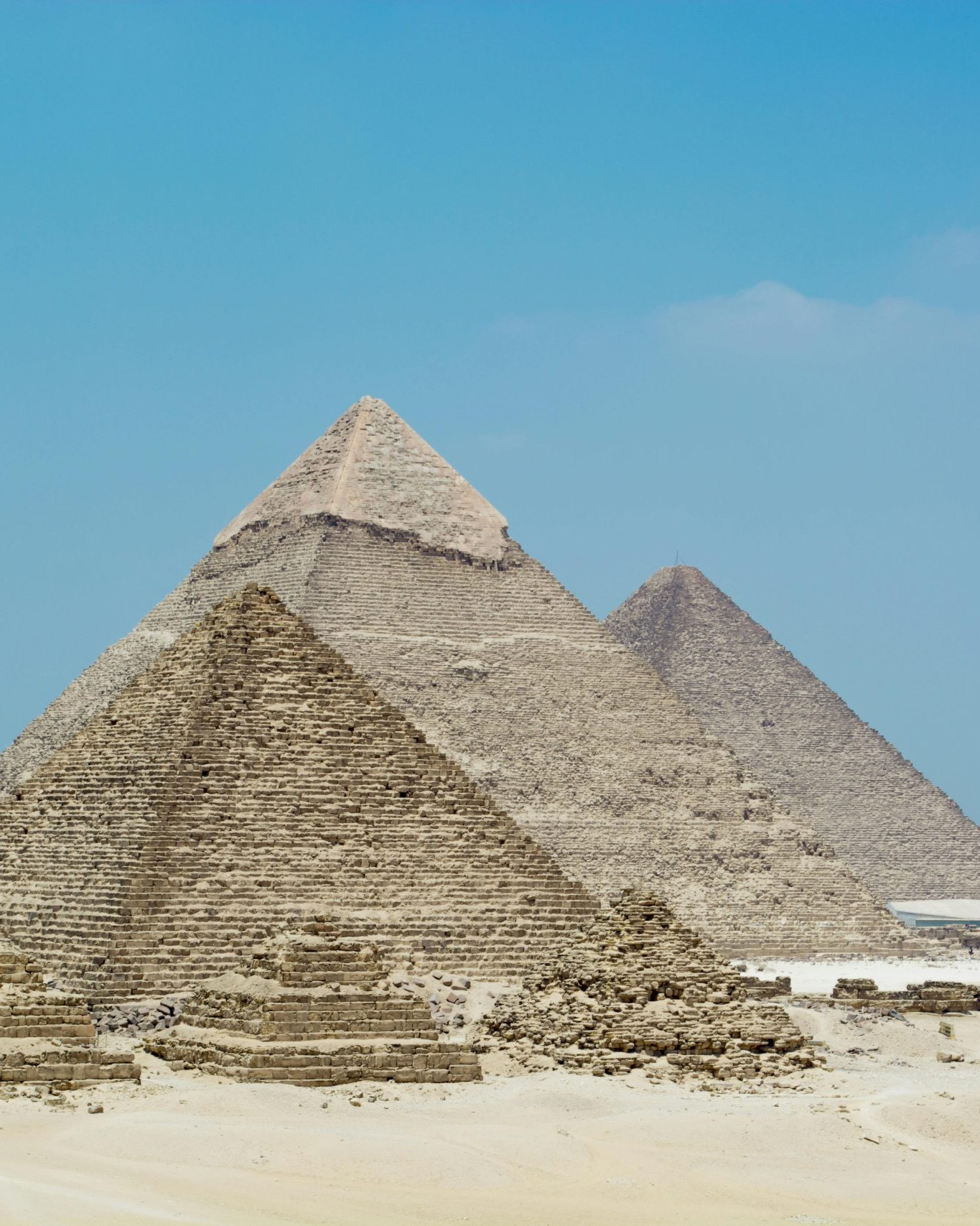Imagine a library that not only preserves ancient wisdom but also integrates cutting-edge technology—a place where history and innovation convene. The Bibliotheca Alexandrina stands as a testament to this very blend. Rebuilt to honor the long-lost Library of Alexandria, it serves as a cultural and educational epicenter for modern scholars and curious minds alike. This article delves into its storied past and architectural splendor, showcasing how it continues to foster learning and cultural exchange in the heart of Alexandria.
Historical Background of Bibliotheca Alexandrina
The original Library of Alexandria was established by Ptolemy Soter, the first Macedonian ruler of Egypt, with the ambition to collect all the world’s knowledge in one place. At its peak, the library housed over a million scrolls and became a beacon of intellectual and cultural advancements. It made substantial contributions to various fields, including science, mathematics, philosophy, and literature. Scholars from around the world were drawn to its vast resources, making it a hub of academic excellence.
The burning and eventual destruction of the Library of Alexandria is a topic of much debate and myth. What led to the destruction of the Library of Alexandria? The destruction was due to a combination of war, fire, and human neglect. Several incidents, including Julius Caesar’s fire during his siege of Alexandria in 48 BCE, are often cited as contributing factors. Over time, these events compounded, leading to the loss of countless irreplaceable texts.
In an effort to revive the spirit of the ancient library, the modern Bibliotheca Alexandrina was built to commemorate its predecessor. Opened in 2002, it serves as a cultural and educational center, continuing the legacy of knowledge and learning. The new library aims to bridge the gap between past and present, offering a space where history and modernity coexist.
Architectural Marvel of Bibliotheca Alexandrina
The Bibliotheca Alexandrina stands as an architectural marvel, designed by the renowned Norwegian firm Snohetta. Who designed the Bibliotheca Alexandrina? The library was designed by Snohetta, blending modernity with historical homage. Its distinctive design includes a massive circular main building, symbolizing the rising sun, and a granite outer wall carved with characters from hundreds of different scripts, reflecting the library’s dedication to global knowledge.
The main reading room is one of the library’s most impressive features. How large is the main reading room at the Bibliotheca Alexandrina? The main reading room covers 70,000 square meters and can accommodate up to 2,000 readers. This vast space is illuminated by natural light that filters through the glass-paneled roof, designed to optimize both light and energy efficiency. The design ensures a comfortable and inspiring environment for study and research.
The complex includes three main buildings:
- The Main Library
- The Conference Centre
- The Planetarium
Each building showcases unique architectural elements. The Conference Centre’s roof is shaped like four pyramids supported by four columns, merging ancient architectural influences with contemporary design. The Planetarium, spherical in shape, resembles Earth and offers shows in both 2D and 3D formats, enhancing the educational experience for visitors.
Major Architectural Features:
- Circular main building symbolizing the rising sun
- Granite outer wall with carved characters from different scripts
- Main reading room covering 70,000 square meters
- Conference Centre with pyramidal roof design
- Spherical Planetarium offering 2D and 3D shows
Current Services and Collections at Bibliotheca Alexandrina
The Bibliotheca Alexandrina is a treasure trove of knowledge, boasting over 2 million items in both printed and electronic forms. How many items are in the Bibliotheca Alexandrina? The main library contains over 2 million items. This extensive collection encompasses books, manuscripts, journals, and digital resources, catering to a diverse audience of scholars, researchers, and general readers.
Specialized libraries within the Bibliotheca Alexandrina provide targeted resources for specific communities and interests. What specialized libraries does the Bibliotheca Alexandrina have? The library includes the Arts and Multimedia Library, Taha Hussein Library for the Blind, Children’s Library, Young People’s Library, Rare Books and Special Collections Library, Maps Library, Francophone Library, Microforms Library, and the Nobel Section. Each of these libraries offers unique collections and services, ensuring that all visitors can find the materials they need.
The Bibliotheca Alexandrina is also a leader in digital projects, enhancing its role as a modern research hub. What digital projects is the Bibliotheca Alexandrina involved in? The library is involved in significant digital projects, including the Internet Archive and the Memory of Modern Egypt website. Advanced technological facilities like the Culturama, an interactive display with nine digital screens, and the VISTA 3D simulation models further support research and educational activities, making the library a cutting-edge center for knowledge and innovation.
| Library Name | Specialization |
| Arts and Multimedia Library | Art and multimedia resources |
| Taha Hussein Library for the Blind | Resources for the visually impaired |
| Children’s Library | Resources for children |
| Young People’s Library | Resources for young adults |
| Rare Books and Special Collections Library | Rare and special collection items |
| Maps Library | Geographical and cartographic resources |
| Francophone Library | French language resources |
| Microforms Library | Microform materials |
| Nobel Section | Resources related to Nobel laureates |
Educational Programs and Cultural Activities
Bibliotheca Alexandrina offers a broad range of educational programs and workshops designed to promote learning and cultural exchange. What types of educational programs does the library offer? The library offers various educational programs and workshops. These initiatives cater to different age groups and interests, ensuring that everyone can benefit from the library’s resources. From literature and science to technology and arts, the programs aim to enrich participants’ knowledge and skills. The Planetarium Science Center also contributes by offering shows and films about astronomy and other scientific topics, making complex subjects accessible and engaging for all visitors.
In addition to its educational offerings, the library is a bustling hub of cultural activities, hosting more than 1,000 events each year. How many events does the Bibliotheca Alexandrina host annually? The library hosts over 1,000 events annually. These include international conferences, meetings, exhibitions, concerts, and theatrical performances. The library’s commitment to promoting arts and culture is evident through its temporary and permanent exhibitions, as well as its collections of contemporary visual art. These varied events and activities ensure that the library remains a vibrant center for cultural exchange and artistic expression.
Types of Events and Activities Offered:
- International conferences
- Meetings
- Exhibitions
- Concerts
- Theatrical performances
- Planetarium shows and films
Visitor Information for Bibliotheca Alexandrina
The Bibliotheca Alexandrina is a popular destination, receiving over 1 million visitors annually. How many visitors does the Bibliotheca Alexandrina receive each year? The library receives over 1 million visitors annually. Visitor information is crucial for planning a trip, including details on opening hours, ticket prices, and tour guidelines. What are the opening hours of Bibliotheca Alexandrina? The library generally opens from 10 AM to 7 PM, with variations on weekends and public holidays. Can you buy tickets online for Bibliotheca Alexandrina? Yes, tickets can be purchased online, making it convenient to plan your visit ahead of time.
Security measures are stringent at the Bibliotheca Alexandrina. What are the security measures at Bibliotheca Alexandrina? Security is tight, and food is prohibited inside the library, although water bottles are allowed. Are children allowed in the main reading rooms at Bibliotheca Alexandrina? Children under 16 are not permitted in the main reading rooms but have designated sections catering to their age group, ensuring a quiet environment for serious researchers.
Visitor Guidelines:
- Food is prohibited inside the library.
- Water bottles are allowed.
- Children under 16 are not permitted in the main reading rooms but have their designated sections.
- Tickets can be purchased online.
Exhibitions and Museums at Bibliotheca Alexandrina
The Bibliotheca Alexandrina is home to a variety of museums that cater to diverse interests. What museums are included in the Bibliotheca Alexandrina? The library includes four museums: the Manuscripts Museum, Antiquities Museum, Sadat Museum, and the History of Science Museum. Each museum offers unique collections that provide insights into different aspects of history and culture. The Manuscripts Museum houses rare and valuable manuscripts, showcasing the rich literary and scholarly traditions of the past. The Antiquities Museum features artifacts from ancient Egypt and other civilizations, offering a glimpse into the region’s historical and cultural heritage.
The Sadat Museum is dedicated to the life and legacy of Anwar Sadat, the former President of Egypt, and includes personal belongings, photographs, and documents that chronicle his significant contributions. The History of Science Museum highlights the developments in science and technology throughout history, with exhibits that engage and educate visitors about scientific advancements and their impact on society.
What shows does the Planetarium at Bibliotheca Alexandrina offer? The Planetarium offers shows in both 2D and 3D formats, making it a popular attraction for visitors interested in astronomy and space science. The shows are designed to be educational and entertaining, providing an immersive experience that brings the wonders of the universe to life.
Museums and Their Focus Areas:
- Manuscripts Museum: Rare and valuable manuscripts
- Antiquities Museum: Artifacts from ancient Egypt and other civilizations
- Sadat Museum: Life and legacy of Anwar Sadat
- History of Science Museum: Developments in science and technology throughout history
Technological Innovations at Bibliotheca Alexandrina
The Bibliotheca Alexandrina is renowned for its cutting-edge technological advancements, positioning itself as a leader in digital projects. What digital projects is the Bibliotheca Alexandrina involved in? The library is involved in significant digital projects, including the Internet Archive and the Memory of Modern Egypt website. These initiatives preserve historical documents and make them accessible to a global audience. Additionally, the library houses advanced technological facilities like the Culturama, an interactive display with nine digital screens, and the VISTA 3D simulation models, which enhance research and educational activities.
Supporting its role as a modern research hub, the Bibliotheca Alexandrina also hosts various specialized research and cultural centers. What research and cultural centers are supported by the Bibliotheca Alexandrina? The library supports the Alexandria and Mediterranean Research Center (Alex Med), the Hellenistic Center, the Arts Center, the Writing and Script Center, and the Center for Special Studies and Programs (CSSP). These centers foster a multidisciplinary approach to research, providing valuable resources and collaborative opportunities for scholars and researchers.
Key Technological Facilities:
- Culturama: Interactive display with nine digital screens
- VISTA: 3D simulation models for research
- Digital Projects: Internet Archive and Memory of Modern Egypt website
Final Words
The Bibliotheca Alexandrina has evolved from a legendary ancient library to a modern cultural and educational hub. Its historical significance, architectural marvels, extensive collections, and diverse cultural programs collectively create a unique institution.
From understanding its origins to exploring its current services, visitors and scholars alike can appreciate the library’s dedication to global knowledge and cultural exchange.
With cutting-edge technological innovations and a rich program of events and exhibitions, Bibliotheca Alexandrina continues to honor its storied past while embracing the future.
Top Attractions
Why would an ancient civilization dedicate 180 years to…
Why did the ancient Egyptians choose a secluded desert…
Are the Great Pyramids of Giza merely monumental tombs, or…





